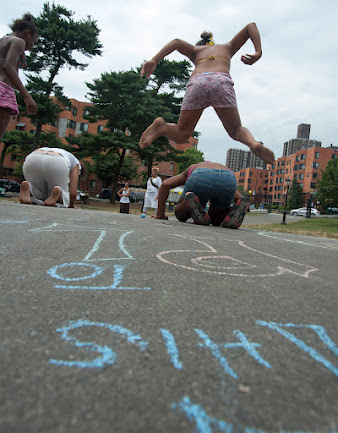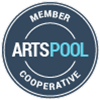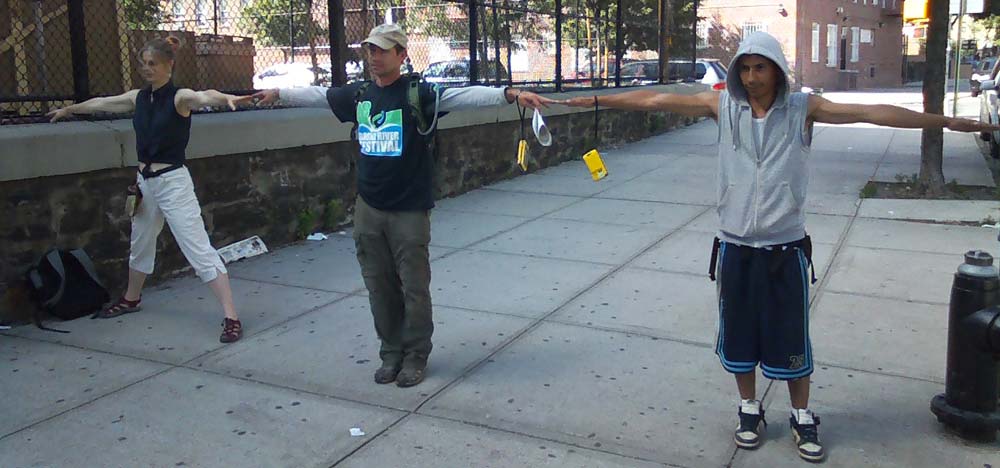Collaborators: Rebecca Boger, Damian Griffin and Paloma McGregor
Project website: http://followthewaterwalks.wordpress.com/
 We plan to use our choreographic, scientific and cultural research to develop interactive movement structures for a culminating “Follow the Water Walks” model that will offer people an embodied experience of the storm water routes and the Bronx River, with attention to what was, is and will be part of that living landscape. We hope that these walks will be led in collaboration with community participants and that the interactions will cultivate and support understanding, stewardship and agency among Bronx residents. We believe there is potential for our work to add to the body of community engagement methods that can serve future GI programs that will be rolled out across the city over the next two decades.We also hope that our methods of research, collaboration and engagement will be useful in future interdisciplinary projects between us, in relationship to the Bronx and other spaces where our work happens (including Brooklyn and St. Croix and Barbuda). Ideally, we will connect our work in disparate locations through both technology and on-the ground interactions, in an effort to continue developing ways in which movement-based explorations, cultural retention and scientific practices can animate the past and present state of our waters and, ideally, inspire us to take an active part in their future.
We plan to use our choreographic, scientific and cultural research to develop interactive movement structures for a culminating “Follow the Water Walks” model that will offer people an embodied experience of the storm water routes and the Bronx River, with attention to what was, is and will be part of that living landscape. We hope that these walks will be led in collaboration with community participants and that the interactions will cultivate and support understanding, stewardship and agency among Bronx residents. We believe there is potential for our work to add to the body of community engagement methods that can serve future GI programs that will be rolled out across the city over the next two decades.We also hope that our methods of research, collaboration and engagement will be useful in future interdisciplinary projects between us, in relationship to the Bronx and other spaces where our work happens (including Brooklyn and St. Croix and Barbuda). Ideally, we will connect our work in disparate locations through both technology and on-the ground interactions, in an effort to continue developing ways in which movement-based explorations, cultural retention and scientific practices can animate the past and present state of our waters and, ideally, inspire us to take an active part in their future.
Among the questions, ideas and issues we hope to explore:
– How do we honor the wisdom the community already holds and build on that? In terms of water resources, what do they perceive the problems are and what solutions do they offer? What practices do they already have? In what ways do they become collaborators and help to drive and shape the project?
– How do we create collaborative methods that honor our distinct research practices and build on our common goal of crossing disciplines, building community involvement and improving the Bronx River watershed? How can quantitative, intuitive and embodied knowledge be valued and utilized?
– How do we find ways in which the information we gather can reverberate through multiple disciplines? (i.e. How do site-specific movement structures and GIS intersect?)
– How do we utilize technology to reflect and connect multiple layers of relationships: community to water systems; elder to youth; body to landscape; past to future?
– How do we each, in our own practices, explore culture, memory, ecology and interdependency? What research methods are distinct? Where is there correlation? Where is there tension? How can our practices challenge and inform one another?
– How do we translate experiences/research/concepts across disciplines, communities, mother tongues – with and without spoken language?

